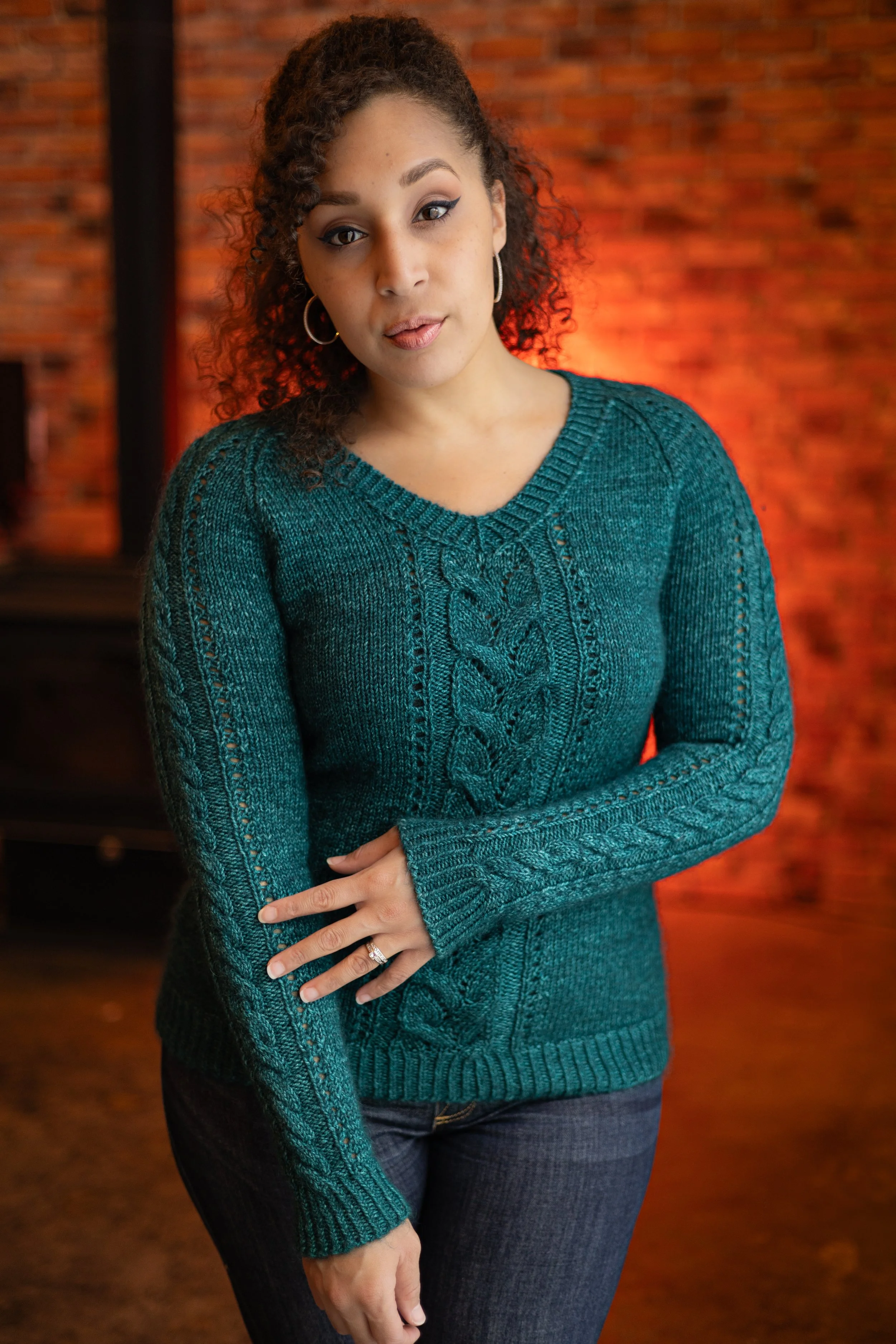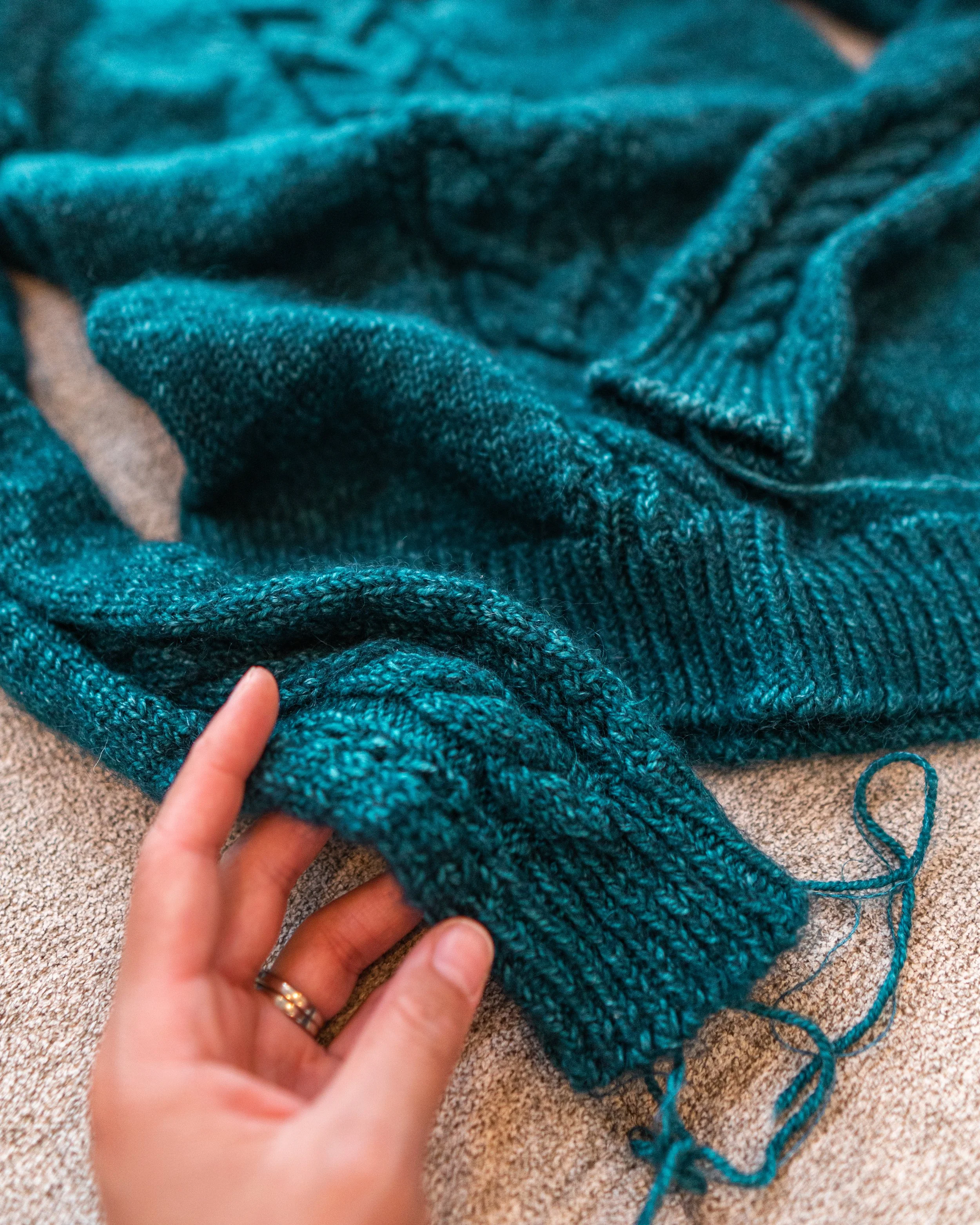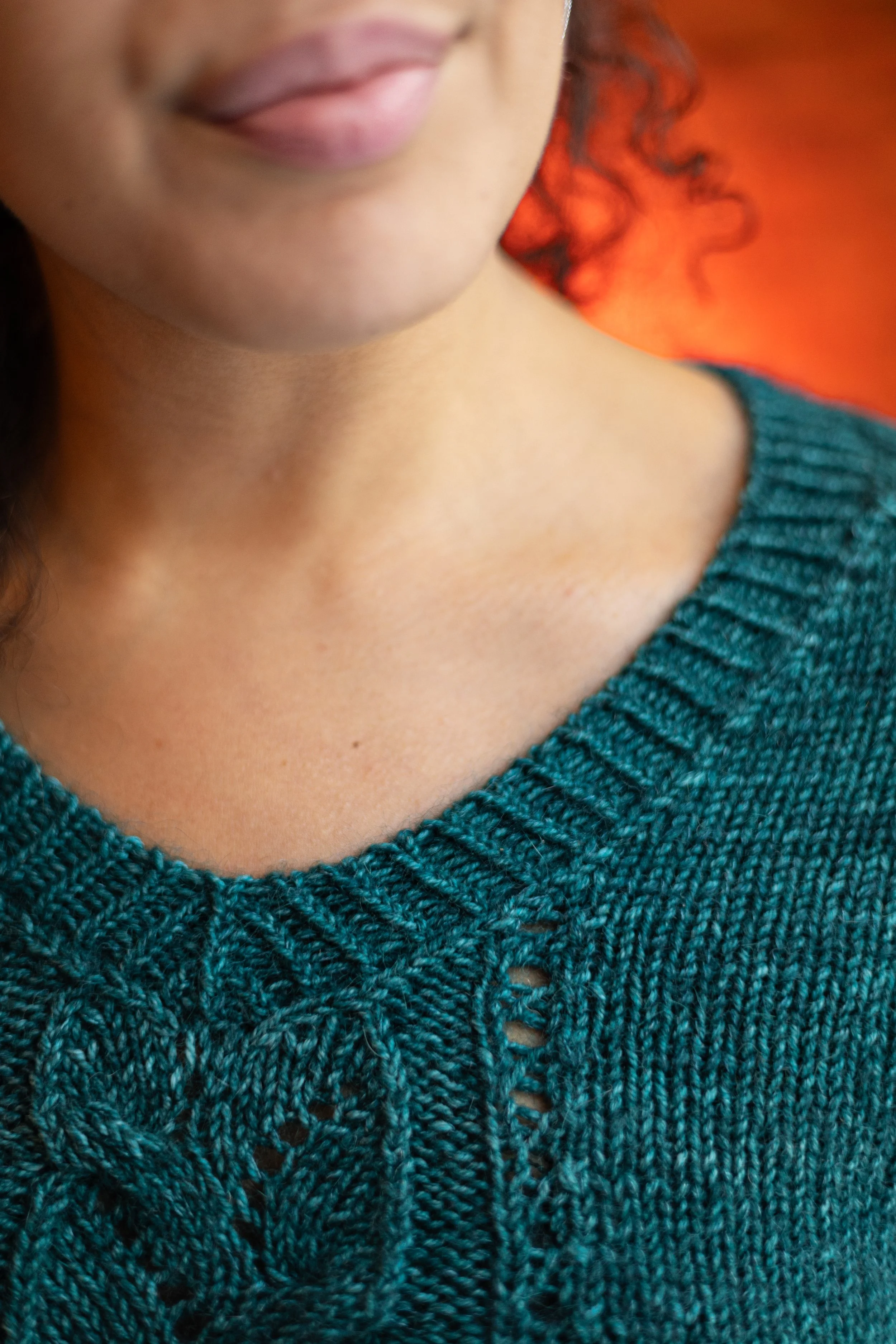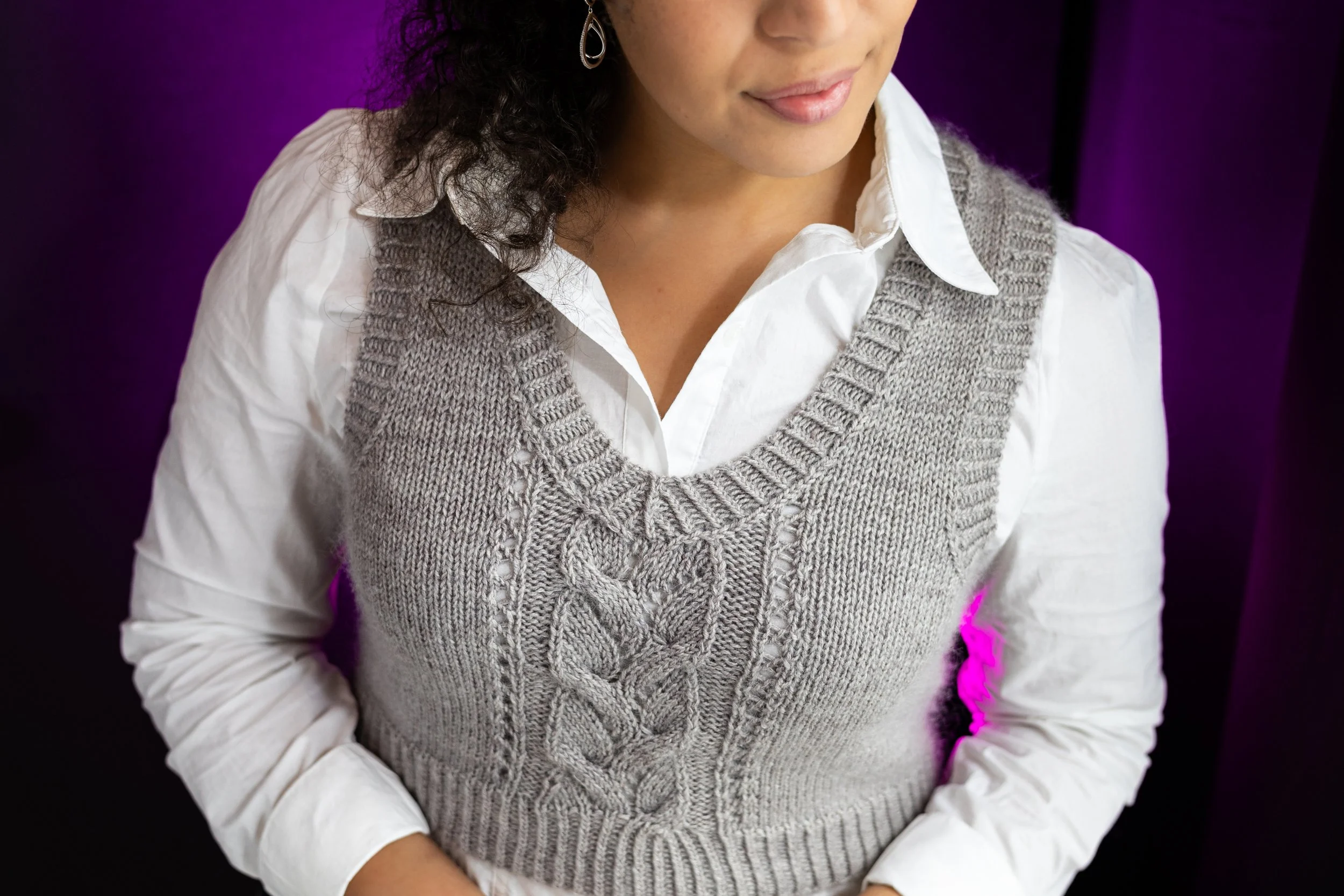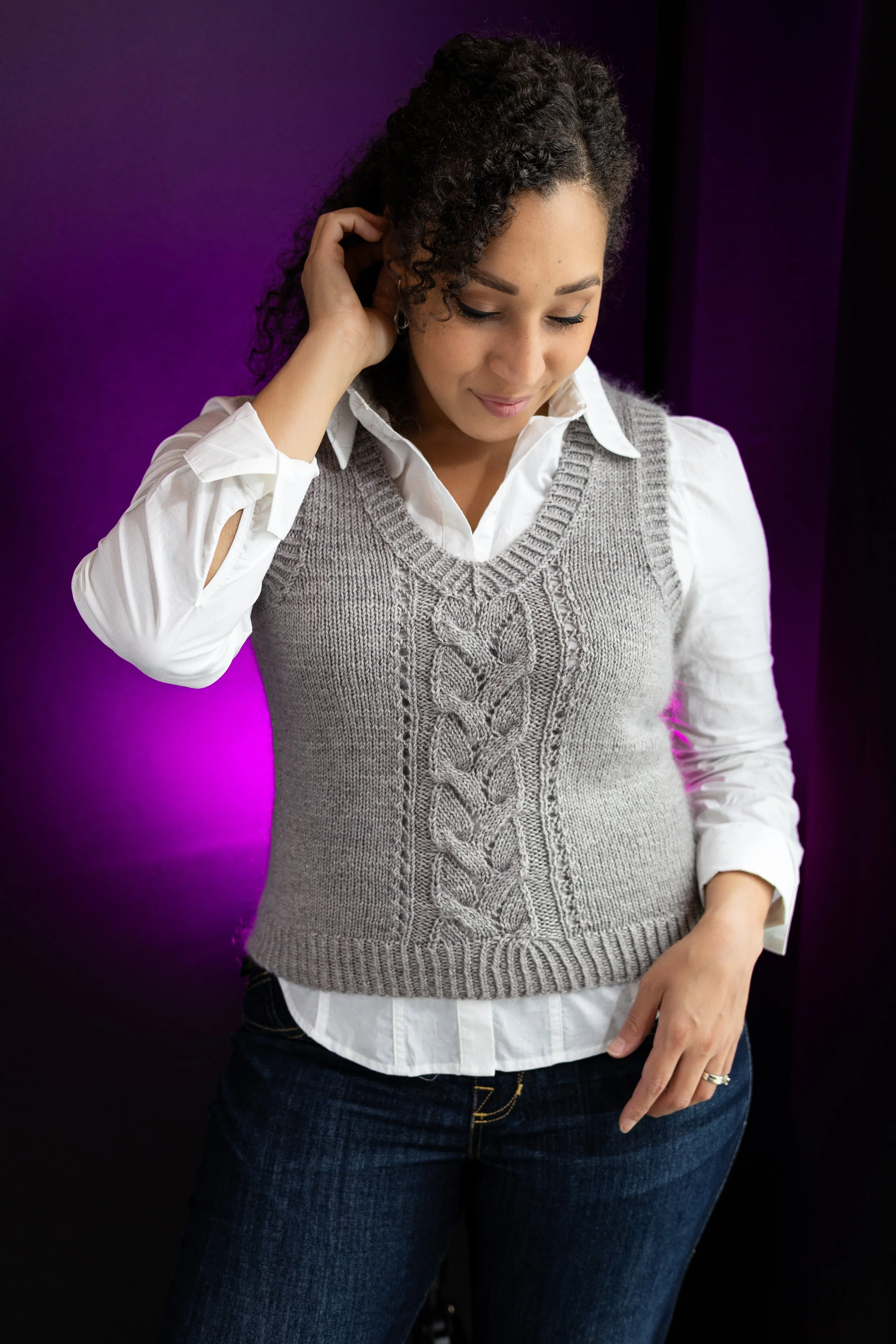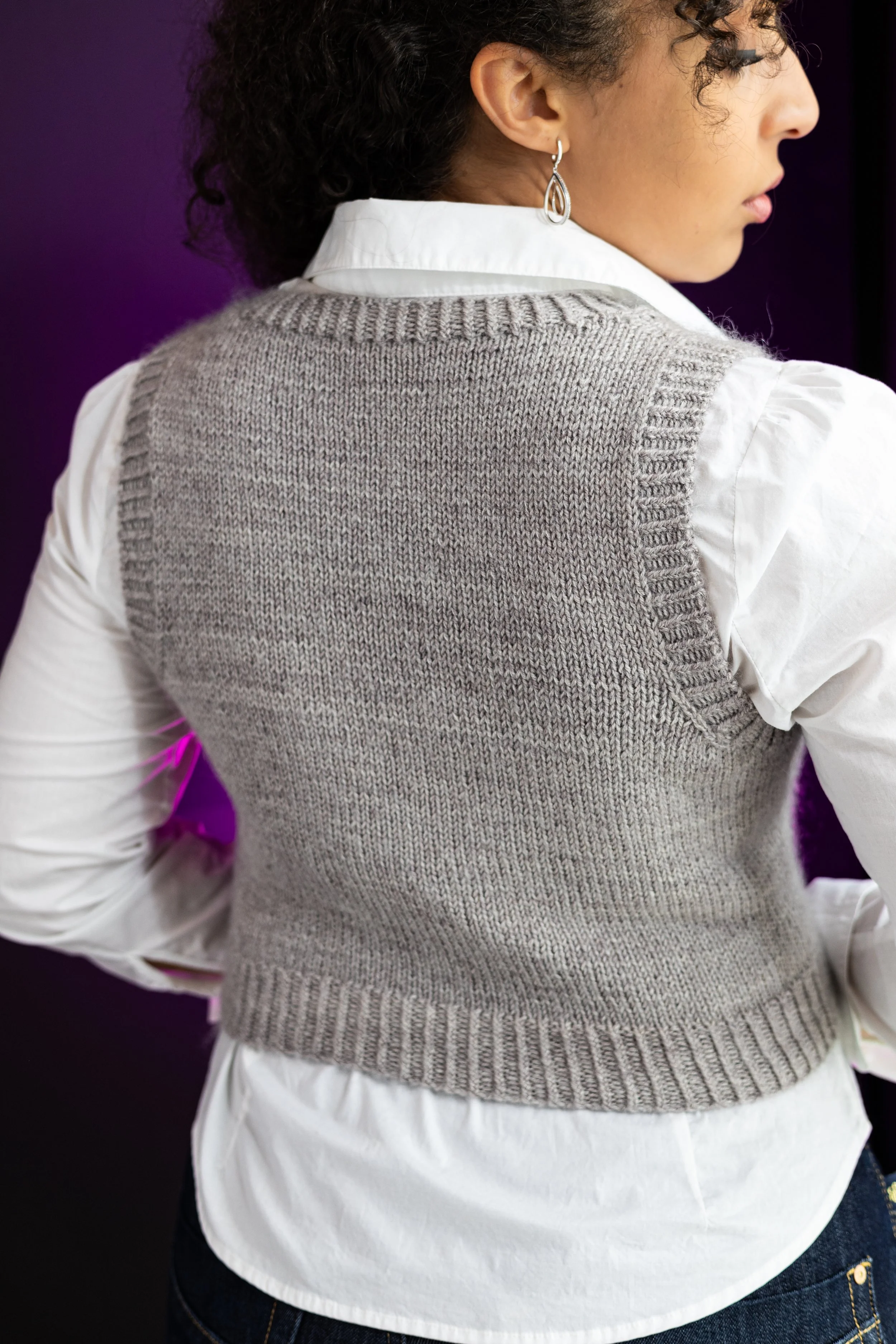Hi there!
Today, I am excited to officially introduce you to a pattern that’s been a long time in the making. If you've been following me for a while, you may have even seen glimpses of this one over the years; I’ve teased and talked about it a few times in a couple previous newsletters, on YouTube, and on Instagram. But now it is finally ready to share in all its glory:
I’ve named this pattern Meant to Vee, and it's available now on Ravelry, Etsy, or my website—just in time for cozy fall knitting and the cooler months ahead!
That’s the TL;DR part of this post, but this sweater has a story—the story that inspired the pattern’s name—and I’d love to share it with you. It all started on September 28, 2018 . . .
Two thousand, one hundred and ninety-eight days ago, I walked out of my local yarn shop with a sweater quantity of yarn and a familiar feeling. You know the one: that on-the-brink of starting something new, creative juices flowing, and endless possibilities feeling that only a maker can know. The word ‘excitement’ doesn’t do this feeling justice.
It wasn’t like me to get a sweater’s worth of yarn without a plan. What would it become? What did it want to be? All I knew for sure was that the color, Malabrigo’s Teal Feather, would make something special and beautiful.
I had kept several sketchbooks since I started designing eight years before. By then, they contained countless sketches of sweaters, tops, and cardigans—many of which hadn’t (or still haven’t) seen the light of day. I flipped through my existing sketches to see if something stood out as perfect for my new yarn, but I couldn’t envision any of my previous ideas in this specific color. So I decided to keep sketching and be patient, and then something funny happened: I kept unintentionally drawing the same sketch. Eight times, to be exact, on different days and in separate sketchbooks.
I realized something was telling me this is what that yarn wanted to become. My sketches reflected a pullover with cabled front and sleeve panels; a U, crew, or soft scoop neck; open, “cold” shoulders; and set-in armholes. I started swatching and trying different cable motifs. The yarn by itself produced a beautiful soft and airy fabric with fantastic drape. But it wasn’t achieving the cozy factor I was going for, so I tabled the idea.
Around the same time, I discovered mohair and the magical effect of holding it together with another yarn. I was designing my Indira shawl using a local-to-me dyer’s mohair/silk base when I realized this was exactly what my sweater idea needed! The day I bound off that shawl was the same day I picked up more of that yarn in the most amazing, rich colorway called Capriccio Teal. This yarn paired with Teal Feather created a fabric that radiated depth, warmth, and glowing tonality. And—being a mixture of baby alpaca, merino, mohair, and silk—it felt like kittens and clouds. This was exactly what I wanted!
Finally, in deep fall 2019, I cast on what I thought would be a top-down sweater. I quickly realized that approach wasn’t practical for this particular design and started over from the bottom up. The sleeves, which came first, flew by, but I took my time knitting the body.
By summer 2020, I was nearly ready to join all the pieces and begin knitting the yoke. However, for reasons I can’t remember, I decided to start the body over. I do remember that I was not looking forward to unraveling a sweater in yarns held together, especially when one of them was a mohair, but it was a beautiful, sunny day and I had time, so I took my project outside and made myself comfortable in the only part of our property that wasn’t in the shade—on the tonneau cover of the bed of my husband Cody’s truck! Then with the sun warming my skin and the sweater warming my lap, I started the cumbersome process. Unravel two rows, wind two separate balls, unravel another two rows, wind again . . .
We lived next door to Cody’s dear grandma at the time, and his cousin and cousin’s wife had moved in with grandma to help take care of her. Well, since I wasn’t exactly sitting in the most inconspicuous place, the wife noticed me outside and came out to ask what I was doing. Without hesitation, she kindly offered to help rewind one yarn while I rewound the other. We spent the rest of the afternoon on grandma’s front porch, chatting and jointly unraveling the sweater in a fraction of the time it had taken me to knit up to that point.
Thankfully, it didn’t take me quite as long to get back on track, and less than two months later I was sitting on that tonneau cover once again doing the final armhole bind off. I excitedly ran inside to try on my finished sweater, but my excitement quickly turned to disappointment. While the sweater looked nearly identical to the sketches, the shape of the neckline and shoulder openings didn’t match the vision I had in mind. I took photos and made notes of what I didn’t like, tweaked the shaping math, and frogged back to the body and sleeve join before knitting the yoke a second time.
And once again, I wasn’t happy with it.
What was it about this combination of neckline, set-in style armholes, and open shoulders that I didn’t like? What did I need to change? I couldn’t put my finger on it. All I know is that I was feeling pretty deflated. The yarn was practically begging me to stop frogging and reknitting it, and I needed a break.
Apparently, a three-year break.
Over those years, thoughts of “needing to finish that sweater” hung over my head and gave me feelings only akin to those of a guilty conscience. Seeing its project bag on the shelf each time I opened my yarn cabinet made me sad. Would I ever finish? Had I failed?
While the sweater languished in timeout, I poured myself into learning more about sweater design, improving my grading methods, and ensuring that my sweater patterns would be well-fitting and truly size inclusive. From those efforts came my Nydia pullover, a revised Julissa pullover, and the adult Nydia cardigan patterns. And after the release of each of those patterns, I pulled my oldest design WIP—that beautiful, nearly finished sweater that I still believed in—out of its project bag with a renewed determination to finish it once and for all.
But each time, I didn’t yet have a solution.
It finally hit me in fall 2023.
The open-shoulder trend seemed to have come and gone, I had recently finished knitting a different V-neck design sample that I loved, and a poll I ran on Instagram revealed that lots of knitters favored V-neck tops. What if I changed this idea to have a V-neck, closed shoulders, and raglan sleeves instead of a U-neck, cold shoulders, and set-in sleeves?
The changes would require a big overhaul of the spreadsheet; figuring out a way to end the center front panel at the base of the V; and, of course, knitting the yoke for a third time. But I had a really good feeling about the change in direction and quickly got to work.
First came the preparation. I unraveled the original yoke and separated the sweater back into its three parts. Then I turned my attention to the front panel and the numbers. My plans for the V-neck and raglan shaping came together perfectly, as if they were only natural. Was this finally going to work?
There was one last order of business before I could find out: Through my previous grading improvements, I had adjusted my size chart. Even my own body had changed over the years, so the sleeves had to be made a little larger and longer. My husband helped me unravel them exactly as his cousin’s wife had helped me unravel the body years ago.
While reknitting the sleeves, I fell in love with the combination of fiber, vibrant color, and texture all over again. But I was also very grateful that past me had decided to knit the sweater from the bottom up so I didn’t have to redo all of it!
Then came the time to put my revised pattern into practice.
As the rows got shorter and shorter with each raglan and neckline decrease row, my excitement grew. When I finally reached the neck edge, I tried on my sweater with bated breath . . .
It worked! And it was beautiful.
It needed some fine-tuning and just one more redo, but this time I wasn’t disappointed or deflated. I knew exactly what I had to change to get the look just right. And for the first time in this sweater’s development, I finally felt like I hadn’t let it down.
I bound off for the very last time on December 29, 2023.
So today, just over six years from the day I brought home that initial sweater quantity, I am both relieved and incredibly proud to bring this pattern to you.
This design challenged me more than any other. There was a span of time where I didn’t think I could finish it. But things got easier—things fell into place—when I stopped trying to force an idea and let the design take me where itwanted to go all along. In hindsight, it feels a little like serendipity.
It was, simply, “Meant to Vee.”


